Nereida Patricia’s New Mythologies
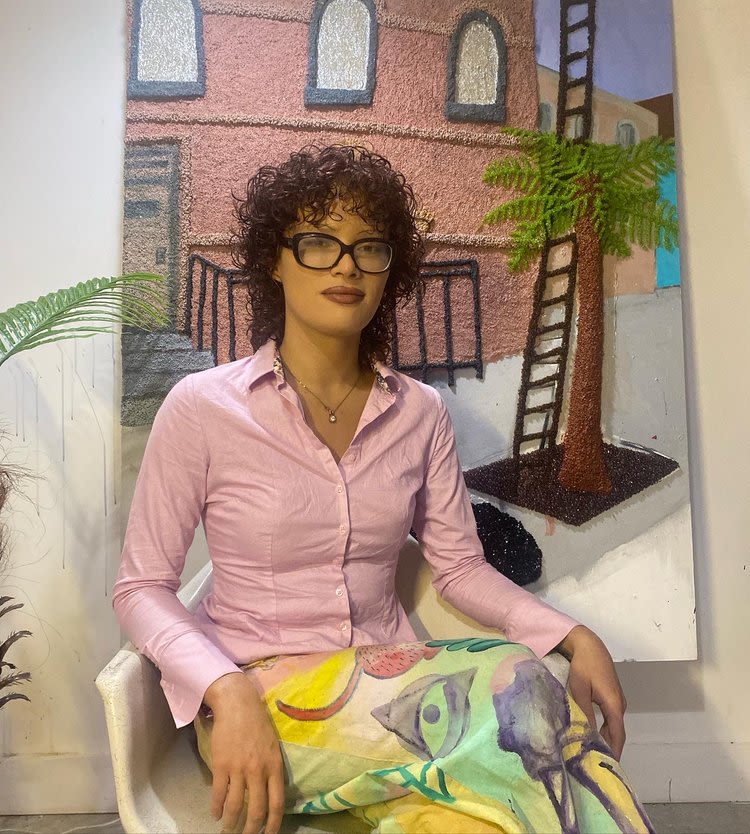
by J. Howard Rosier (MFA 2018)
In Death Drop, one of Nereida Patricia’s (BFA 2020) signature “wall works,” a Black trans woman stares off into the distance.
Behind her sits a table with vanity mirrors, a rack of clothes, and another female personage who appears to be falling through the dressing room’s tile floor—a ribbon of musical notes floating throughout the space. The latter figure is followed by a skeleton, rather than a shadow.
Like many of Patricia’s works, the piece contains an intimacy that belies its grandeur and massive scale. It operates within lore instead of rendering traumatic experiences, pointing toward a way out of society’s malaise and apocalyptic thinking.
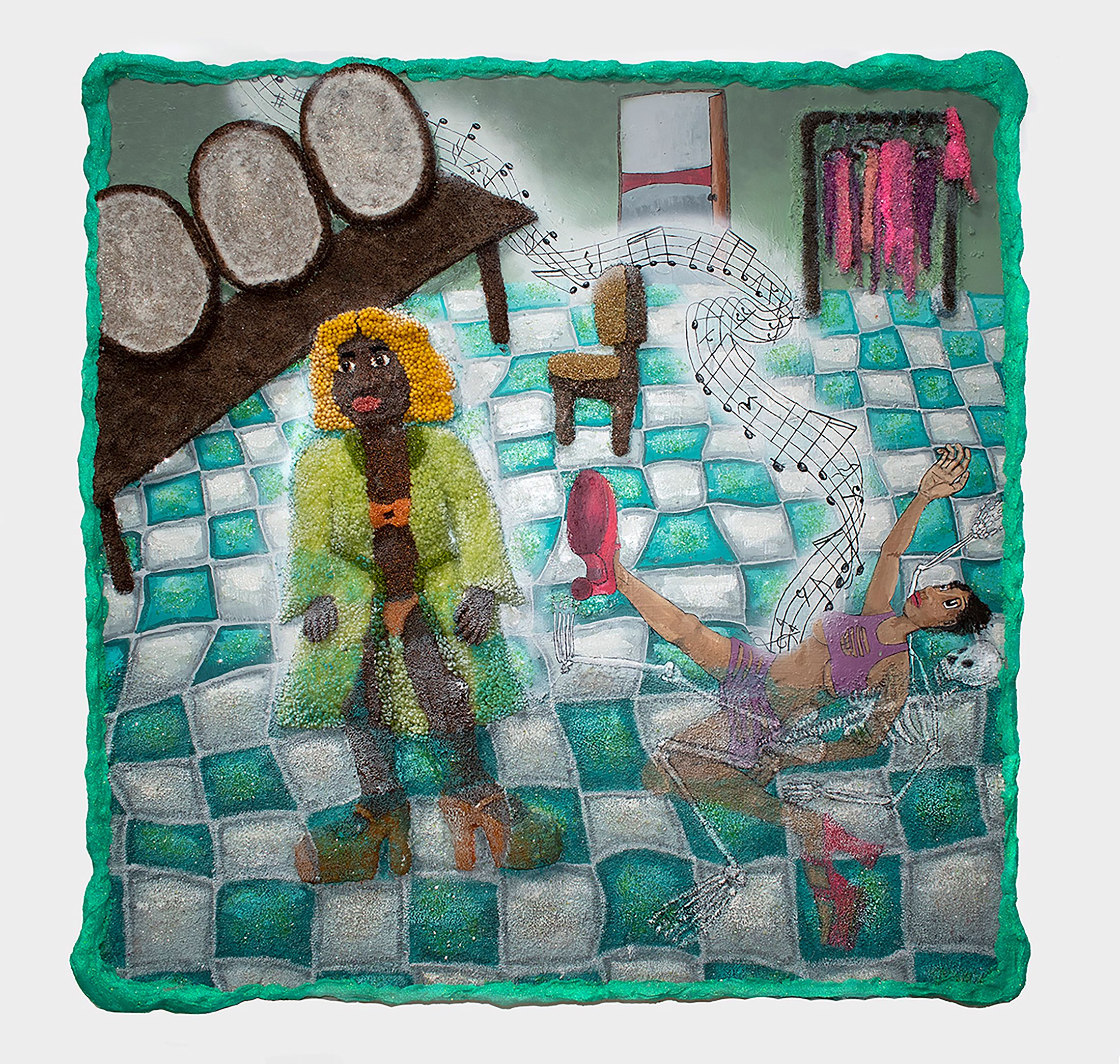
Nereida Patricia, Death Drop. Image courtesy of the artist
Nereida Patricia, Death Drop. Image courtesy of the artist
“Before colonization and the Middle Passage, gender was something completely different and trans people across cultures and geography were an important part of ritual and society,” said Patricia. “I want to create new mythologies and imaginaries for trans people of color today that are future-oriented, and also mind our shared history.”
Inspired by arpilleras, colorful patchwork textile pieces done on burlap that depicted the human rights violations of the Augusto Pinochet dictatorship in Chile, Patricia's work frequently interrogates issues of gender, class, and race. Outside of Chicago—where her work has shown at the Museum of Contemporary Art (MCA), Prairie Gallery, and Monique Meloche—her pieces have been exhibited by institutions as near as the Museum of Contemporary Art Detroit and as far as Annka Kultys Gallery in London. In 2021, Newcity named her as one of the year’s breakout artists.
“I’ve mostly worked on wood,” Patricia said. “[The pieces are] really heavy, with large works sometimes weighing 75 pounds.” Bright colors and rich textures explode out from these vibrant narrative works, which—like paintings—are ostensibly flat, but use sculpting techniques to create a sense of three-dimensionality. The works are usually made from glitter, acrylic, paper clay, and a combination of glass beads and dust; seeing a digital rendering calls to mind weavings or textile works. Yet Death Drop, for example, comes in at 48 x 48 x 4 inches.
“I want to create new mythologies and imaginaries for trans people of color today that are future-oriented, and also mind our shared history.”
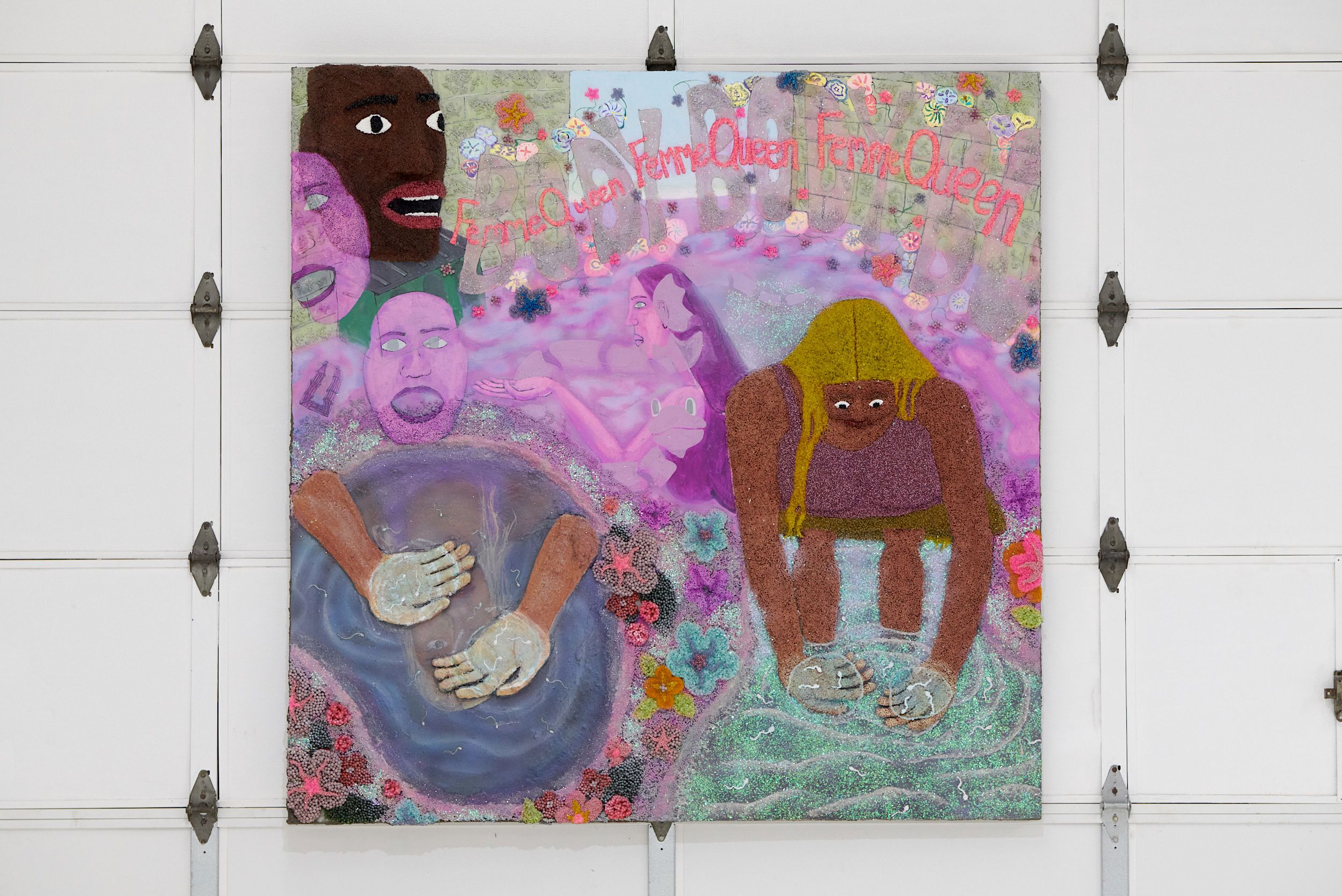
Nereida Patricia, Femme Queen Body. Image courtesy of the artist
Nereida Patricia, Femme Queen Body. Image courtesy of the artist
The cross-currents that inform her creative process don’t allow for easy categorization. “I think the duality of a mixed Black/white upbringing, and being the child of a working class immigrant … meant that I had to really learn to think critically about what it meant to be American and also of a diaspora,” said Patricia, whose father is Afro-Peruvian and whose mother is Irish American. “I think both my family and I have teed up with the American Dream in difficult, complicated ways that I'm still working through.”
Hailing from Hudson, New York, Patricia’s youth was influenced by talk shows, Greek mythology, Peruvian finger puppets, and jazz. The first creative practice that she took up was poetry. Patricia originally enrolled at the New School, but dropped out, took a year-and-a-half break, and applied to the School of the Art Institute of Chicago (SAIC). At SAIC, Assistant Professor, Adj. Juan Angel Chavez and Visiting Artist Amanda Williams helped her think about how art can respond to injustice. Lecturer Mindy Rose Schwartz helped Patricia consider accessibility. Though she explored various mediums, most of Patricia’s coursework was done in Performance Studies.
“I’m pretty introverted,” she said. “Performance I think helps get me more comfortable and in my body and [allows me to] see the body in the work.”
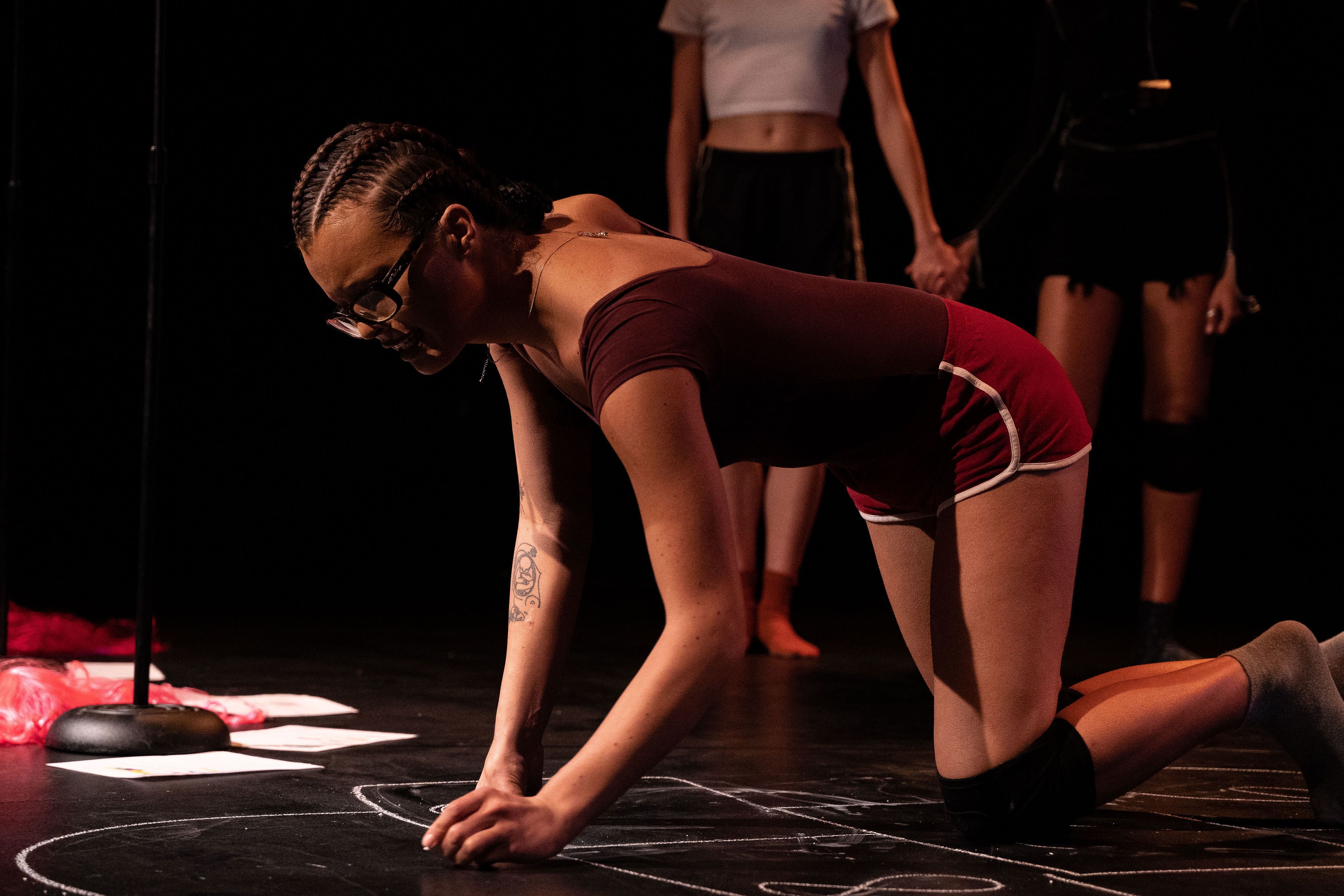
Patricia in performance. Photo: Courtney Morrison
Patricia in performance. Photo: Courtney Morrison
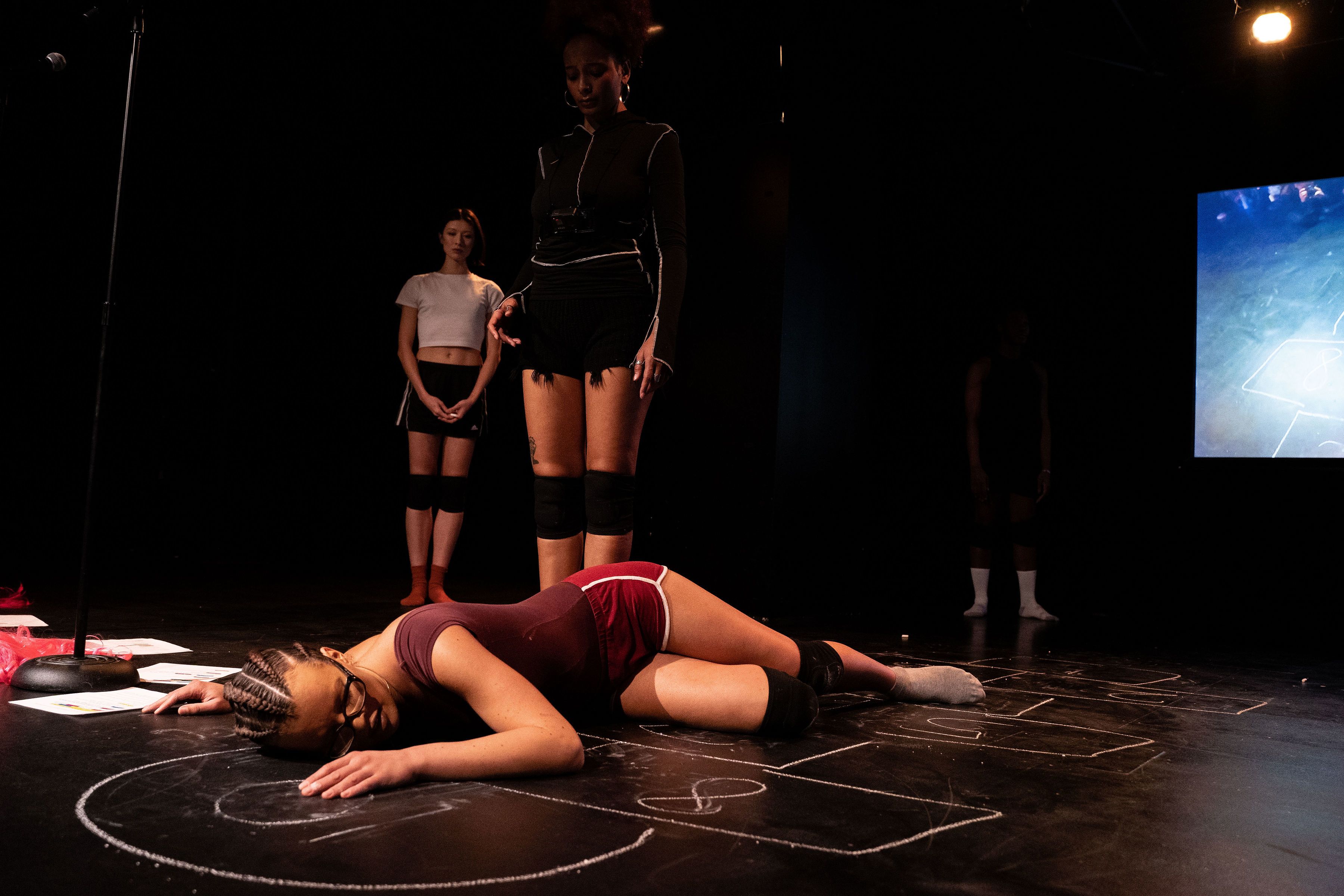
Patricia in performance. Photo: Courtney Morrison
Patricia in performance. Photo: Courtney Morrison
The influence of poetics and performance in Patricia’s practice is most obvious in the wall works’ sense of motion, their concentrated sense of drama, and their poise within the liminal space of rendering interiority from an external perspective—often of the living remembering the dead. Pigeon Lady—an homage to a Washington Square Park figure who makes and surrounds herself with stuffed pigeons, only to attract the company of real ones—is made personal by rendering the titular character as transgender.
Ms. Colombia, which was featured in the MCA exhibition The Long Dream, is a memorial to the late LGBTQ icon, who was found dead at 64 in the waters off Jacob Riis Park in New York. Patricia portrays Colombia in one of her trademark colorful outfits, floating on the surface, a translucent ghost hovering over the body. An EMT and ambulance sit on the shore in the background.
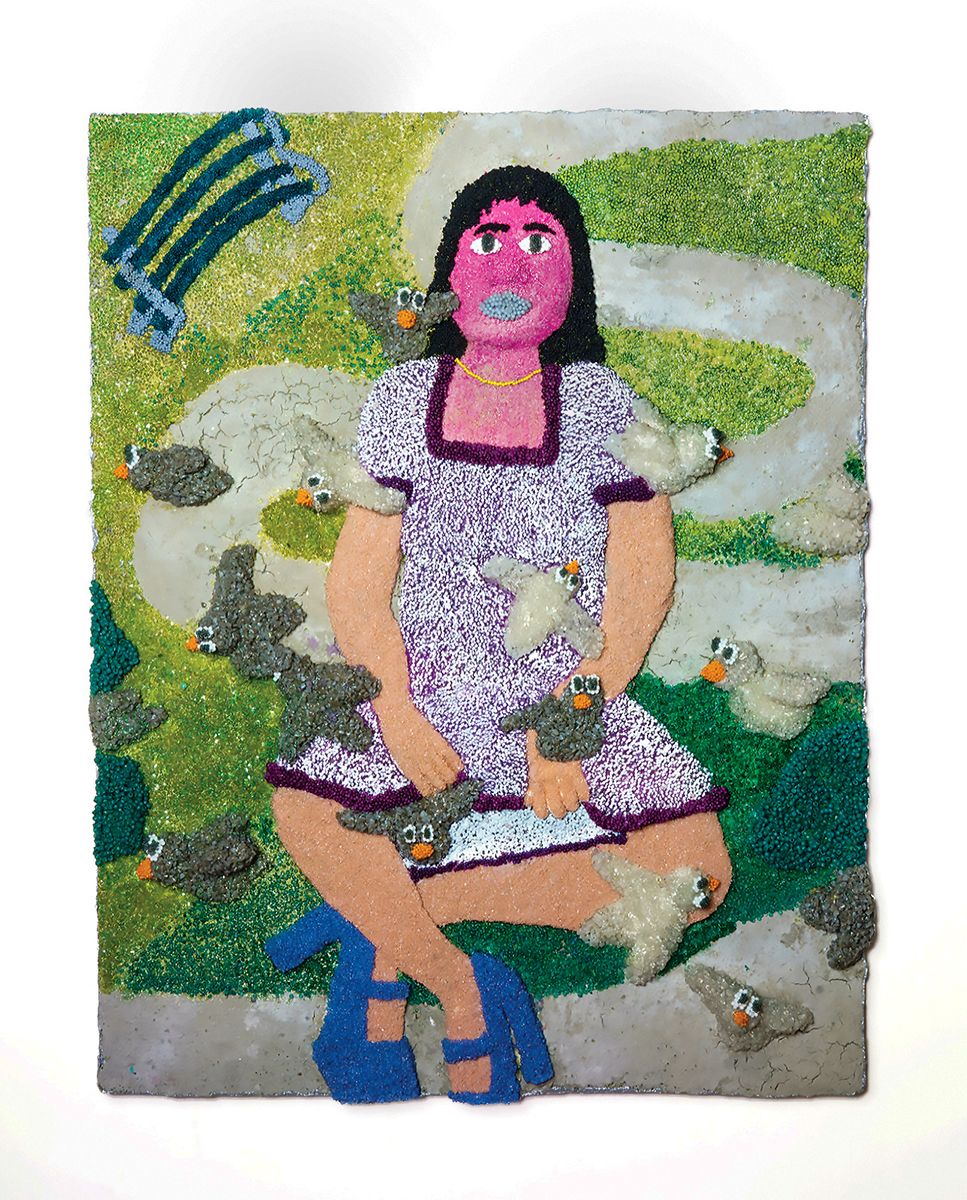
Nereida Patricia, Pigeon Lady. Image courtesy of the artist
Nereida Patricia, Pigeon Lady. Image courtesy of the artist
“Most African cultural technologies in Peru were destroyed in colonization and the [Spanish] casta system,” Patricia said, drawing a connection from her own heritage. “So I find myself interested in ideas of ancestral memory, diaspora, and ways to tell stories that are uniquely my own, but touch on these larger, erased, and forgotten histories.”
Patricia’s desire for galvanization also helps explain her technique. Image-making on a plane, with clearly defined characters, makes the work more open to interpretation than a monument and more accessible than an abstract piece.
“I don’t think I’m necessarily giving answers or presenting any kind of utopia,” she said. “The issue is taking marginalized space and people in different ways and reimagining them on a cosmological scale. I want the work to be uplifting, and to connect with people.” ■
